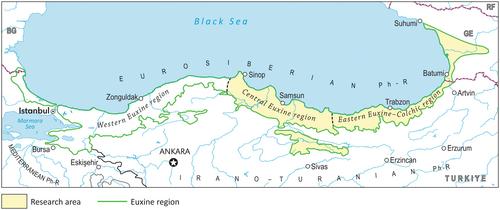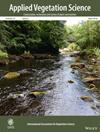Classification of forest and shrubland vegetation in central and eastern Euxine Turkey and SW Georgia
Abstract
Questions
What are the main vegetation types of forest and shrubland vegetation in central and eastern Euxine Turkey and SW Georgia? What are the main environmental factors affecting their diversity? What is their syntaxonomic position? Can we integrate them into the European vegetation classification system?
Location
Central and eastern Euxine Turkey and SW Georgia.
Methods
We collected 3104 vegetation plots of forest and shrubland vegetation in the study region and performed Two-Way Indicator Species Analysis (TWINSPAN) classification. We described vegetation types based on the classification results, expert knowledge and information from literature sources. We defined diagnostic species and prepared distribution maps for each vegetation type. To determine the most significant environmental variables on floristic differentiation, we used canonical correspondence analysis. Detrended correspondence analysis with passive projection of most significant environmental variables was run to interpret the environmental variation of vegetation types.
Results
The studied vegetation was divided into 29 vegetation types related to seven main vegetation groups: relict Mediterranean forests and shrubland (mainly along the coastline, beside some inland localities), lowland to submontane forests, central Euxine mountain forests, eastern Euxine (Colchic) mountain forests, subeuxine forests, azonal riparian forests and subalpine and alpine shrubland. Elevation is the most important factor causing the differentiation in vegetation. It is followed by longitude and latitude. Among climatic variables, temperature seasonality, annual precipitation and precipitation of the wettest quarter are the most significant factors for vegetation differentiation. These factors correlate with the reduction of maritime climate and geomorphological features.
Conclusions
Vegetation types mostly correspond to the syntaxa accepted in the EuroVegChecklist. However, some of them do not appear in the EuroVegChecklist since they appear only beyond Europe. We described three syntaxa as new: Abietion equi-trojani, Querco cerridis-Carpinion orientalis and Piceo orientalis-Fagenion orientalis. The study revealed high vegetation diversity of the region that should be taken into consideration in ecosystem management and used as a reference in restoration and mitigation of the effects of global changes.


 求助内容:
求助内容: 应助结果提醒方式:
应助结果提醒方式:


